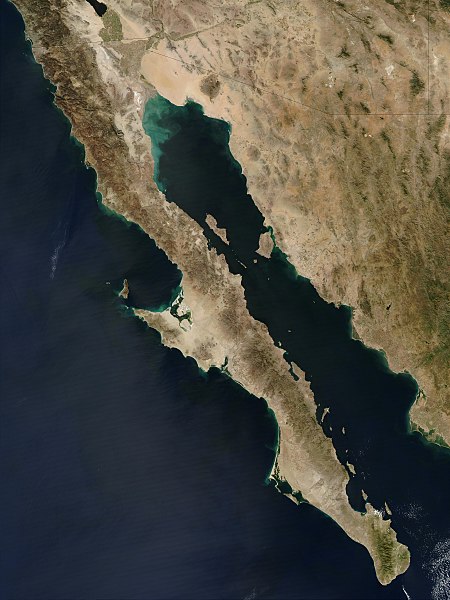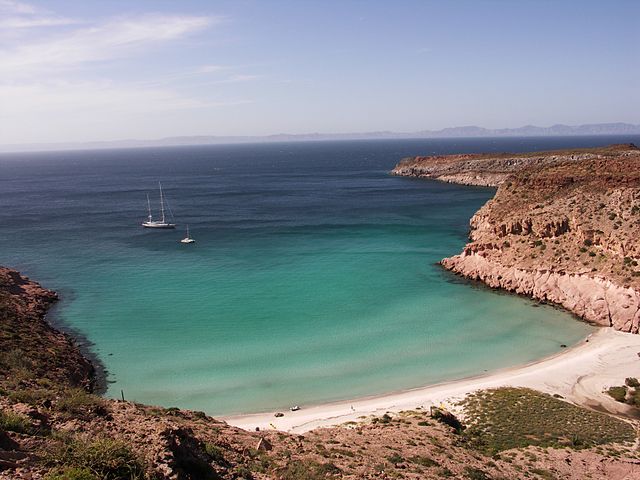Spanish missions in Baja California
The Spanish missions in Baja California were a large number of religious outposts established by Catholic religious orders, the Jesuits, the Franciscans and the Dominicans, between 1683 and 1834. The missionary goal was to spread the Christian doctrine among the Indigenous peoples living on the Baja California peninsula. The missions gave Spain a valuable toehold in the frontier land, and would also act as a deterrent to prevent pirates from using the peninsula of Las Californias as a jumping off point for contraband trade with mainland New Spain. Missionaries introduced European livestock, fruits, vegetables, and industry into the region. Indigenous peoples were severely impacted by the introduction of European diseases such as smallpox and measles; furthermore, the expulsion of the Jesuits from the Spanish Empire in 1767 ripped the social fabric of the peninsula, although Franciscans were sent to replace them. In 1769, the Franciscans moved to Upper California, leaving Dominicans in charge of Baja California. By 1800 indigenous numbers were a fraction of what they had been before the arrival of the Spanish, yet even today many people living in Baja California are of indigenous heritage.

Misión de Nuestra Señora de Loreto Conchó was the second mission established on the Baja California Peninsula
Mission San José del Cabo, the southernmost mission established on the Baja California Peninsula
Misión Santa Gertrudis.
Misión San Francisco Javier de Viggé-Biaundó.
Baja California peninsula
The Baja California peninsula is a peninsula in northwestern Mexico. It separates the Gulf of California from the Pacific Ocean. The peninsula extends from Mexicali, Baja California, in the north to Cabo San Lucas, Baja California Sur, in the south.
Satellite image of the Baja California peninsula
Isla Partida, which is part of the San Lorenzo Marine Archipelago National Park
Port of Cabo San Lucas
Baja California as seen in April 1984, from the bay of a Space Shuttle (STS-41-C)








